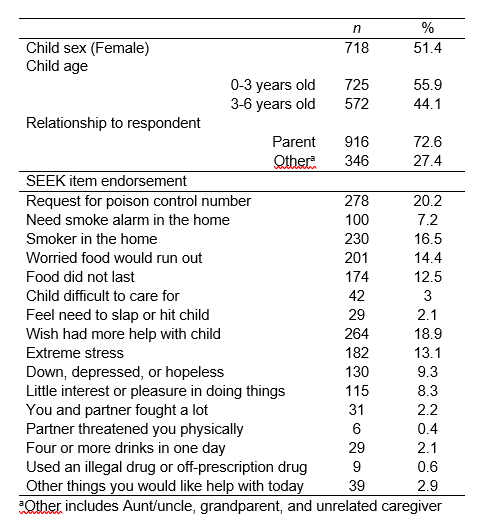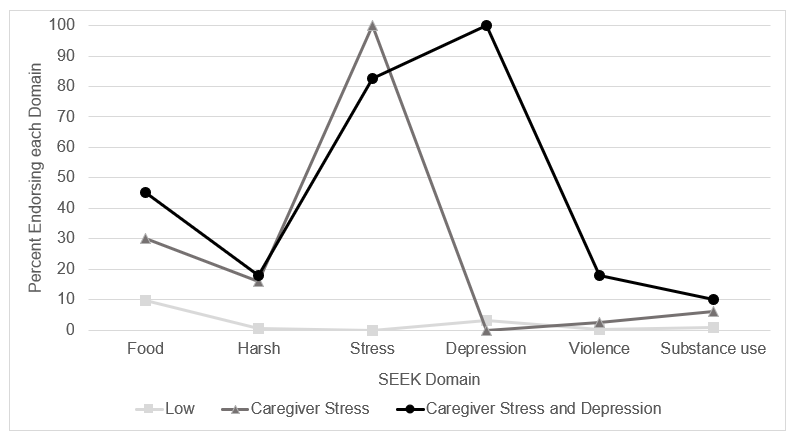General Pediatrics: Primary Care/Prevention
General Pediatrics 3
459 - Profiles of Early Childhood Adversity in an Urban Pediatric Clinic: Implications for Pediatric Primary Care
Publication Number: 459.216

Katherine L. Guyon-Harris, PhD, LP (she/her/hers)
Assistant Professor
University of Pittsburgh School of Medicine
Pittsburgh, Pennsylvania, United States
Presenting Author(s)
Background:
Early life adversity has been shown to have cascading effects on child health and development. Pediatric primary care is an ideal venue to screen and address childhood adversity during the earliest years of life due to frequent well child visits. Pediatric practice settings may be especially poised to offer primary prevention via integrated care that includes early screening, parenting support, anticipatory guidance related to early social-emotional development, and linkage to resources.
Objective:
We examined the prevalence of different types of early adversity, as well as positive or protective experiences, among pediatric patients seen at a high-volume, urban primary care pediatric practice affiliated with an academic children’s hospital in the Midwest. We also examined latent classes of early adversity to understand which types of experiences are more likely to co-occur.
Design/Methods:
Pediatric patients at this clinic identify primarily as Black or African American ( >94%) and are largely Medicaid-eligible ( >85%). Children (N=1,434) were screened for early adversity and protective factors at well child visits from 6 months through 6 years of age via caregiver report on the Safe Environment for Every Kid (SEEK), with a subset also completing the Adverse Childhood Experiences-Questionnaire (ACE-Q, n=1,373) and a modified Protective and Compensatory Experiences Scale (PACES, n=1,377). SEEK items were grouped into six binary presence-absence domains for the latent class analysis: food insecurity, harsh parenting, parenting stress, caregiver depression, interpersonal violence, and substance use.
Results:
SEEK item prevalence is reported in Table 1. Three classes of adverse experiences on the SEEK were identified: 1) Low (L; 72%), 2) Caregiver Stress (CS; 17%), and 3) Caregiver Stress and Depression (CSD; 12%) (Figure 1). Belonging to the L class was associated with lower ACE-Q total and higher PACES total compared to the CS and CSD classes (Table 2). SEEK classes were not associated with child sex or age. In a subsample of respondents who identified as the child’s parent (n=916), ACE-Q score was significantly greater for the CSD class compared to the CS class.
Conclusion(s):
A range of adverse experiences in early childhood were reported across a pediatric clinic. Experiences of caregiver stress coupled with depression in particular may be an indicator of high levels of childhood adversity and low levels of protective factors. Pediatricians are well situated to survey early risk and provide guidance to caregivers and linkage to prevention programs and supports to benefit children and their families.


